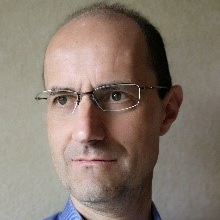Low-Power RF Energy Harvesting for IoT Devices
A special issue of Journal of Low Power Electronics and Applications (ISSN 2079-9268).
Deadline for manuscript submissions: closed (31 July 2020) | Viewed by 10200
Special Issue Editors
Interests: wireless sensing; Internet of Things (IoT); intelligent metasurfaces; RF energy harvesting
Special Issues, Collections and Topics in MDPI journals
Interests: electronics engineering; analog integrated circuits; CMOS; low-power analog circuits; analog circuit design; analog–digital conversion; energy harvesting; analog in-memory computing; low-power RF receivers; bandgap references
Special Issues, Collections and Topics in MDPI journals
Interests: CMOS; microelectronics; circuit simulation; cadence; analog electronics; circuit analysis; electronics; digital electronics; VHDL programming; electrical and electronics engineering
Special Issue Information
Dear Colleagues,
An ocean of electromagnetic waves surrounds us. The number of radio frequency emitters has been rapidly increasing over the last few decades due to the development of new technologies (e.g., cellular networks, wireless sensor networks, and the Internet of Things). Countless wireless applications illuminate power to serve numerous customers. Most of this energy remains unused, since usually a client captures only a very small fraction of the transmitted power. Thus, it is an engineering challenge to capture this energy and recycle it by suppling small electrical devices, such as Internet-of-Things (IoT) devices.
Various attempts have been made towards the development of low-power RF energy harvesting systems, since the available ambient power density level is relatively low. New high-efficiency and high-sensitivity rectenna designs have assisted this effort, while the use of the latter in rectenna arrays has augmented the DC output power. Electrically small rectennas with high radiation efficiency are leading this attempt, forming high-efficiency dense rectenna arrays. Power management systems based on maximum power point tracking techniques are developed, alongside with the rectification systems providing enhanced DC voltage output.
On the other hand, periodic surfaces using resonating unit-cells have been developed over the last few years for RF energy harvesting, exploiting the well-known properties of the frequency selective surfaces. More recently, metamaterial-inspired structures and Huygens–Fresnel principles have been used to provide even more high-efficiency and high-sensitivity RF harvesting systems for low-power input.
Authors are invited to submit regular papers following the JLPEA submission guidelines, within the remit of this Special Issue call. Topics include but are not limited to:
- High-efficiency and high-sensitivity low-power RF energy harvesting for IoT devices;
- Power management circuits for low-power RF energy harvesting systems;
- RF energy harvesting surfaces for low ambient power density;
- Metamaterial-inspired and/or Huygens-based geometries for low ambient power density;
- Emerging technologies.
Dr. Stylianos D. Assimonis
Dr. Andrea Boni
Dr. Michele Caselli
Guest Editors
Manuscript Submission Information
Manuscripts should be submitted online at www.mdpi.com by registering and logging in to this website. Once you are registered, click here to go to the submission form. Manuscripts can be submitted until the deadline. All submissions that pass pre-check are peer-reviewed. Accepted papers will be published continuously in the journal (as soon as accepted) and will be listed together on the special issue website. Research articles, review articles as well as short communications are invited. For planned papers, a title and short abstract (about 100 words) can be sent to the Editorial Office for announcement on this website.
Submitted manuscripts should not have been published previously, nor be under consideration for publication elsewhere (except conference proceedings papers). All manuscripts are thoroughly refereed through a single-blind peer-review process. A guide for authors and other relevant information for submission of manuscripts is available on the Instructions for Authors page. Journal of Low Power Electronics and Applications is an international peer-reviewed open access quarterly journal published by MDPI.
Please visit the Instructions for Authors page before submitting a manuscript. The Article Processing Charge (APC) for publication in this open access journal is 1800 CHF (Swiss Francs). Submitted papers should be well formatted and use good English. Authors may use MDPI's English editing service prior to publication or during author revisions.
Keywords
- RF energy harvesting
- Internet of Things (IoT)
- Wireless power transfer
- Low power
- RF energy harvesting surfaces







